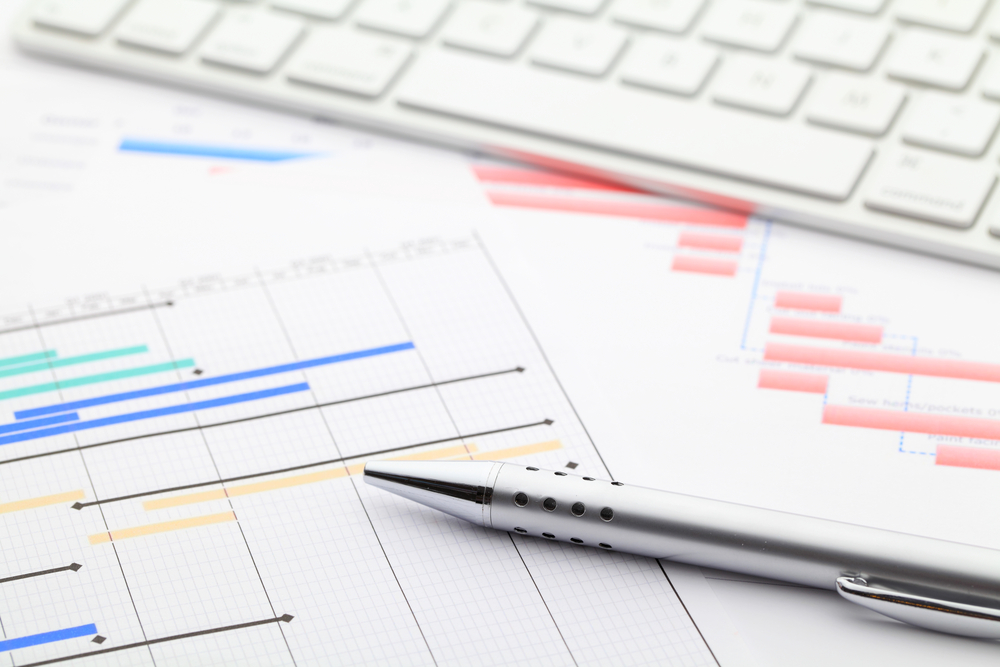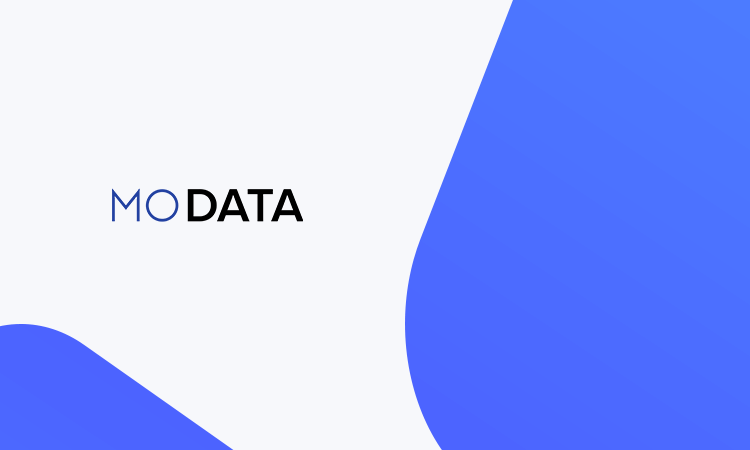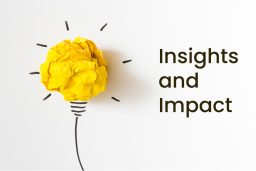
Introduction
Setting up a sales funnel is one of the most challenging tasks for many organizations. And among the most important ones. It can be the difference between a successful company and a failed business. But it seems like the more information we have about sales funnels, the more complicated they become.
In this article, we clear up some of the confusion surrounding:
- funnel stages
- lead movement
- stage probabilities
- funnels and forecasting
- funnels and win rate
By the end of the article, you’ll be able to set up your funnel in a way that allows you to use it productively and take your organization to the next level.
What is a Sales Funnel?
A sales funnel is the path a prospect goes through to become a client. The sales funnel starts at the top with first contact with the “prospect” and culminates at the bottom where a “prospect” actually turns into a “client”.
Sales funnel has different stages and the number of prospects decreases with each stage closer to the bottom of the funnel. The definition also describes the way a company finds new clients.
Sales funnels need to be managed and optimized for efficiency. This is where establishing a working principle for your particular organization comes in handy.
The most popular model that is used as the basis for setting up most sales funnels is called AIDA.
What is the “AIDA” model?
AIDA is an acronym which stands for Awareness (A), Interest (I), Decision (D) and Action (A), representing four stages of a typical buyer’s journey through the process of acquiring a product or service. It consists of four sales funnel stages:
- Awareness – people become aware of their problem and begin researching. This is the moment you first capture a prospect’s attention
- Interest – at this point, people are already aware of you and they’re interested in what you have to offer. They’re comparing yours with other solutions on the market
- Decision – in the decision stage, all the research has been done and the potential options have been reduced to two or three
- Action – at the bottom of the funnel, the client makes the purchase
By modeling your sales funnel based on AIDA ensures that your sales process matches the buyer’s buying process. It allows your sales machinery to approach the buyers with content and sales outreach, which matches her mental state.
However, AIDA is generally a crude skeleton of what your actual sales funnel should look like. Four stages of AIDA should be used more as a template. They are more like phases of a prospect’s journey to a client. Your actual sales funnel will have sales stages named after the real-life steps a prospect takes before it converts to a client. For example in your particular sales funnel you might define two stages to cover “awareness phase” like “email open” and “website form fill”. Similarly “Action” phase can also have two stages in your sales funnel like “legal contract review” and “closed-won”.
As evident from above, while conceptually similar to AIDA, your real sales funnel will likely have a few more sales stages and those sales stages will have probably different names, as opposed to Awareness, Interest, Decision and Action, as described by AIDA model
You need to make your sales funnel more detailed and use all the available data to your advantage. This means doing a bit more work to establish and maintain it. But if you do it right, you will watch your sales soar.
How many sales funnel stages do you need?
Number of funnel stages span from 4 at the bottom end to 7-8 at the top end. In most cases, you will need at least 4 stages to address the prospect’s journey. Anything more than 7-8 stages will usually be considered too many in most cases.
Many organizations use a 4 stage, AIDA like, model to a varying degree of success. However, if you want to implement advanced sales tactics and use proper analytics, the AIDA model just won’t cut it. Instead, you need a unique model that’s specifically designed with your business and your sales cycle in mind.
The number itself is not that important. What matters is the number of stages should match the number of distinct steps the sales opportunity follows in real life.
What happens if there are too few sales stages in your sales funnel?
If there are too few sales stages in your sales funnel, you can’t get valuable data about the sales process.
Creating a sales funnel with a deficit of stages is a great way to shoot yourself in the foot. It conceals what’s happening beneath the surface in your funnel and makes it next to impossible to diagnose problems. This is especially true for B2B organizations with long sales cycles.
Sales funnels with few stages are perfect for smaller or newer organizations. The lack of an established sales process allows these organizations to get away with it. However, these funnels also limit scalability. They’re great for a start, but if you don’t develop your funnel beyond the foundation, your business will likely grow very slowly because of lack of proper oversight and resulting lack of efficiency gains .
What happens if they’re too many sales stages in your sales funnel?
Having too many sales stages in your funnel can over complicate the sales process and create confusion.
Your funnel needs time to develop and grow, just like your business. Establishing too many stages from the beginning risks confusing you more than it helps.
You need to know the answers to the following questions.
- Why are those stages there?
- Why were they included?
- What will we miss if one or more of the stages are removed?
If you don’t know why a stage exists, remove it. Anything that enters your sales funnel has to have a good reason to be there.
Having too many stages can also lead to confusion within your ranks. Big, bulky funnels are a nightmare to manage in the CRM and you can be sure your reps won’t keep the CRM stages in a pristine condition because of it. This will contaminate your data and send you on a wild goose chase every time you try to figure out why you’re not meeting your quarterly targets.
There are exceptions to this if you have a long sales cycle and a complicated sales process. Sometimes you may need to have 3-4 stages that have the same probability to close. Even though some sales pipeline stages don’t give you any new information, they are an important part of your process. In those cases, you can use forecast categories (more on that below).
If all of this still seems overwhelming, tools like MoData are an excellent way to keep your pipeline squeaky clean, while managing your probabilities and forecast categories without any confusion. The bigger the organization, the more difficult pipeline management becomes.
How to Use Stage-to-stage Movement Data to Decide the Number of Funnel Stages in a Sales Funnel
You can use stage-to-stage movement data to decide the number of stages in a sales funnel. Stage movement data ( i.e. the number of movements of open sales opportunities in your sales funnel per starting and ending stage combination) will reveal the appropriate number of funnel stages. Such data is usually the most definitive litmus test to help you decide if you’re using the right number of stages for your organization or not.
Let’s say you only have 4 stages. Between the stages, there are lots of people dropping out and you can’t seem to figure out why. If that’s the case, maybe you’ve missed to include a stage or two. Perhaps you’ve not included your demo as stage and that’s where your weakness lies. Or maybe your marketing and sales departments aren’t working together to quality the leads. Whatever the problem may be, if it’s not clear where and why you’re losing prospects along the way, then you probably don’t have enough stages.
You can use this same method to figure out if you have too many stages. If there is no movement between any particular set of stages, then one (or both) should be removed. Let’s say all of your MQLs turn into SQLs, but you have a SAL stage between these two. Then you either need to remove some of the stages, or fix the criteria used to qualify MQLs and SALs.. It’s not likely that all MQLs would end up as SQLs. If you have a reason for these stages to exist, even though they do not reveal any relevant information, apply forecast categories.
While important, such stage-to-stage movement data is relatively hard to capture by most CRMs. CRMs have the information about the current stage of each opportunity but there is no way to figure out the stage-to-stage journey opportunity has gone through before landing in it current stage. However there are ways to get it using other specialized tools. For example, MoData captures such data and it’s easy to use reports available to get this information. It also allows you to track historical data and adjust accordingly.
Do the sales funnel stage names matter?
Sales funnel stage names matter a lot. Your naming convention will affect the way your reps perceive the stage. The existence of the stage is tightly related to its name. Stage names should match real world steps that the sales opportunities go through.
Names should be unique and unambiguous. In most industries, there are certain naming conventions. It’s best to follow these conventions instead of trying to reinvent the wheel. It will be a lot easier for new reps if you’re following the same naming conventions as other companies in your industry.
Misnaming stages can be a huge potential problem. For example, if you call one of the stages “Legal”, reps may not move it along until Legal gets involved. Even though what you actually meant was “Contract” stage.
Another example would be the “Demo” stage. If you call the “Demo” stage “Presentation”, you’re creating a very different expectation in your reps. Demo connotes the product specific demonstration either self-service by prospect or by sales rep. Presentation suggests powerpoint based formal meeting conducted by reps. Those are two very different processes that involve different sets of participants, in-person / video meetings and yield different results.
These are not trivial matters and they cause a lot of confusion leading huge productivity losses in many organizations. So make sure not only that your funnel stages have a good reason to exist, but also that they’re aptly named.
What are stage probabilities for a sales funnel?
Stage probability of a stage reflects the likelihood of a particular “prospect” which belongs to that stage to become “client”.
Every sales opportunity goes through the funnel stages. You have the biggest numbers of prospects at the top of the funnel where people are merely “browsing” and then you have the lowest numbers of prospects at the bottom of the funnel, where they actually become clients. Since every sales opportunity goes through this process, it’s relatively easy to estimate how likely a sales opportunity is to close depending on its stage in the funnel.
For example, you know that only 15% of the prospects that have gone through the marketing qualification process have become your clients. This means that if you look at a sales opportunity and it’s still at the MQL stage, the probability of it closing is still pretty low (or about 15%). However, you know that 90% of the prospects who have received a contract have become clients and you’re looking at a sales opportunity where the contract has been sent. Then the likelihood of success is 90%.
Stage probabilities can help you plan ahead and prioritize different sales opportunities depending on your targets and the time of the quarter. If the end of the quarter is near, you should focus on the sales opportunities that have already entered late stages. If it’s the beginning of the quarter, there’s no such rush. Either way, stage probabilities are a very useful tool for planning and forecasting.
You can easily base stage probabilities on historic data and have a pretty good idea of how likely a sales opportunity is to close. Otherwise, you can rely on your reps’ intuition about this, which could work with more experienced reps. But then again, some people are optimistic, some people are pessimistic, and data is completely impartial about this.
Why Do Stage Probabilities Matter for a Sales Funnel?
Stage Probabilities matter for two reasons:
- As a signalling mechanism to your rep:
- It’s a numeric representation of “proximity to conversion” and shows which sales opportunities have a higher likelihood to close.
- It allows you to numerically represent the relative importance of one stage over another. It helps keep everybody on the same page.
- As a forecasting mechanism. It allows you to estimate future sales and better inform your business decisions (more on this below).
As a general guidance there are few common models of funnel stages and associated probabilities.
For simple / standardized products, it might be something like this:
- Interested – 10%
- Discovery – 25%
- Qualification – 50%
- Negotiation – 75%
- Closed/won – 100%
For complicated, more technical products, it might look more like this:
- Qualification: 15%
- Value Proposition: 25%
- Team Review: 35%
- Negotiation: 45%
- Committed / Contract Sent: 80%
- Closed Won: 100%
Stage probabilities give you a rough estimate of how likely a sales opportunity is to close. As a prospect moves down the sales funnel stages, the probabilities of the sales opportunity closing increase. Knowing those percentage probabilities allows you to focus on the right sales opportunities at the right time.
There is a reason we use the term “funnel” in sales. It’s because further down the sales funnel you go within the sales process, the lower the number of prospects left in active consideration. Your job is to make sure as many opps make it to the bottom of the funnel as possible. This is where stage probabilities come in.
What about multiple sales funnels?
It’s common to have multiple sales funnels.
Most organizations have more than one sales funnel. Usually one for Direct sales and another one for Renewal. Since each type of opportunity typically goes through different client journeys.
Each sales funnel should go through similar considerations to decide the number of stages, stage probabilities, stage names etc. independent of the other.
Do you need to adjust sales funnel stage percentages?
Yes, you need to adjust sales pipeline percentages. As new data and improvements in the sales process come into play, the percentages should change over time. Stage probabilities should not remain stagnant.
Those changes should be based on real world data. If you’ve estimated around 15% of the MQLs get closed, but data consistently shows the number is closer to 10%, then you need to adjust the probability associated with the MQL stage accordingly. Otherwise, you might end up with skewed numbers, a false sense of confidence, and a nasty surprise at the end of the quarter.
The accuracy of your funnel stage probabilities should be increasing as you feed your CRM and data analytics tools with new information.
Do Funnel Stages Affect Forecast Accuracy?
Absolutely, sales stages can directly as well as indirectly affect sales forecast accuracy.
- Directly: based on stage probabilities. As discussed earlier each of the stages reflects a certain likelihood of the sales opportunities to close. One of the most popular ways to forecast is to use stage probabilities to calculate a weighted forecast.
- Indirectly, based on the number of stages and how close the funnel stages reflect the real life opportunity movement.
- Number of stages: When you are forced to use a large number of sales funnel stages it’s common to combine sales stages into a higher level grouping called Forecast Category for forecasting purposes. Each of the forecast categories is then assigned a probability. Probabilities are then used to calculate forecast category based weighted forecast. (more on this later)
- The closer the stages reflect the real work, the more likely reps are going to take the time to move the opportunities. The more opportunities in your funnel are in the correct stage the more accurate your forecast is going to be.
Weighted Forecast = Sum ( Opportunity Amount x Opportunity Stage Probability)
So the way you assign sales stage probabilities will directly impact forecast accuracy
Weighted Forecast = Sum ( Sum( Opportunity Amount In Forecast Category) x Forecast Category Probability)
Note on Stage Based Forecasting
Stage based forecasting has an Achilles heel even if your funnel stages represent the real world progression of the sales opportunities. While in most cases the stage probability reflects the likelihood of sales opportunities closing, in a non-trivial number of cases there are more nuances that need to be taken into account.
For example :
- If Rep knows something about the sales opportunity which has a substantive effect on its closure probability. It could be something like loss of a key contact at the customer’s side. In these cases it is advisable to use rep level overrides to reflect the true forecasted state of sales opportunity. This is where individual opportunity confidence categories come into play (more on that below).
- In cases, where sales stages are too granular to reflect real-world sales processes. Such granular stages are not best suited for aggregate forecasting. Let’s say an opp moves from MQL to SQL where MQL has 10% probability and SQL has 15% probability. While you do need different stages to reflect the progression of sales opportunity overall, an SQL opportunity is not 50% more likely to close than an MQL as numbers reflect. Because we really care about closure not progression of a sales opportunity for forecasting purposes. So we do need different stages to match the real world progression of the opp. But that’s not optimal for forecasting. To avoid this problem, it’s common to combine a few stages into a new categorisation called Forecast Categories.
What are sales forecast categories and how do they relate to sales funnel stages?
Sales forecast categories are higher level categories ( a sort of overlay so to speak) on top of sales funnel stages
There are two main types of forecast categorization
- individual opportunity confidence categories and
- overall revenue categories.
Both are important, even though they play at a different scale so let’s explore them further
Individual opportunity confidence categories
Individual opportunity confidence categories estimate the probability of individual sales opportunities closing at the specified price within a certain time frame. There are different ways to measure these, but the most popular are:
- Pipeline – the projected close date for this opp goes beyond the current quarter.
- Possible – there is a chance the opportunity will close in the relevant quarter at the specified price. However, it’s far from a done sales opportunity. The rep has a plan what to do, but it’s too early to say whether the opp will close or not. Used for middle of the funnel opps. It may be used for top of the funnel opps, too, if the sales cycle permits for the opp to be closed in the current quarter.
- Probable – there is a big chance the opportunity will close in the relevant quarter at the specified price. The rep is working on it and making good progress. They’re confident they can close the sales opportunity. Used for mid-funnel opps or late stage opps when it’s not clear whether or not the sales opportunity will close during the current quarter.
- Commit – it’s almost a done sales opportunity. The rep is very confident they will close the sales opportunity. The close date is within the relevant quarter and the sales opportunity is near its end. 80%-90% of sales opportunities in this category should successfully be closed won. Used for late stage opps.
If you are wondering how these categories are related to the pipeline stages. It’s actually pretty direct. If an opportunity is in the “SAL” stage it will likely be assigned to the “Pipeline” forecast category. It would be unfounded confidence to assume that an SAL is probable. The lead was just accepted and no work has been done, yet. It would be a baseless assumption that it will close any time soon. On the other hand, it’s very realistic to put an opportunity in the “Commit” category where the contract has been sent because it’s very likely to close soon.
Sales forecast categories work especially well when the sales process has many stages, but not every stage actually improves the chances of closing the sales opportunity in any substantial way. Like in the example above, going from SQL to “Meeting Set” stage isn’t really moving the needle. It’s great that sales have qualified the lead, but that improves the chances of closing the sales opportunity only slightly. This is assuming you have “Meeting Set” as a stage in your sales funnel because your sales process requires for you to track every opportunity for which the meeting has been set.
On the other hand, reaching a cardinal stage, such as the demo, is a much better predictor of a sales opportunity’s success.
So it does not make sense to assign a higher probability of closure in the first case ( i.e. opportunity moving from SQL to “Meeting Set”) but it does make sense to do that in the second case. Forecast categories come handy in that case.
Overall revenue forecast categories
Overall revenue forecast categories can refer to the aggregated revenue forecast for a sales rep or even the organization, altogether.
- Worst case scenario – this is the absolute minimum of revenue that can be expected. It’s based on the closed and the committed sales opportunities.
- Most likely case – this is the most likely amount of revenue that can be expected. It’s based on the closed, committed, and probable sales opportunities.
- Best case scenario – this is the maximum amount of revenue that can be expected. It’s based on the closed, committed, probable, and possible sales opportunities.
These projections need to be continuously adjusted based on real-world data. With the help of tools like MoData, you can easily follow the historical performance and look at real-time data to adjust the forecasts.
How to Use Funnel Stages to Increase Win Rate
Funnel stages can be used to increase win rate by providing a blueprint for the whole sales organization. It allows you to align all your resources behind sales opportunities which can benefit most from added focus. The stage probabilities make it really easy to focus on the sales opportunities that are most likely to close without having to rely on “gut feeling”.
It’s also helpful to identify the cardinal stage. The cardinal stage is the stage in the sales process where the chances of closing the sales opportunity once that stage has passed increase exponentially.
For many SaaS companies it’s the demo, for example. While the chances of closing the sales opportunity don’t improve dramatically from MQL, SAL, to SQL, you know that if you’ve reached the demo stage, the chances to close increase. Focusing on sales opportunities who have passed the cardinal stage can dramatically increase your team’s win rate.
Conclusion
Applying the methods above get the guessing game out of the sales funnel design process and allow you to focus both your sales strategy and tactics more efficiently. Setting up a sales funnel that works for your organization isn’t easy, but when it’s done correctly, it can skyrocket your sales and help you crush those targets.




